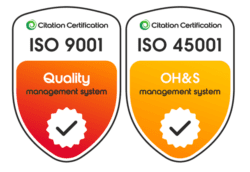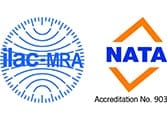Proof load tests, or simply proof tests, constitute a fundamental testing method for any load-bearing structure and rigging setup
The goal of a proof test is to verify the fitness and resistance to strain of equipment used to lift, move or sustain whichever type of weight or mass; this test can be carried out on a single unit (either new or already in service) or on a full product line.
It may moreover be implemented to certify the suitability of machinery to perform additional functions, or to take on higher loads than those currently allowed.
Proof Load testing is a dependable, time- and cost-effective method for testing load-bearing equipment, and is, therefore, a widely utilised means of testing load-bearing structures around the world.
Once testing is completed, the device’s integrity is then verified to ensure that it has not suffered unacceptable deformation or, worse, failure.
This is done via a combination of dimension checking and crack testing, which can take the shape of a magnetic particle test or a liquid dye penetrant test.
All equipment using for measurement during the dimension checks is calibrated and traceable as part of our certified quality management system.
For certification purposes, proof tests can employ controlled loads which are several times higher than those expected during the device’s normal operation.
Proof load values are determined by the applicable Australian Standard, usually using a calculation involving the working load limit (WLL) of the item.
Testing frequency can also vary, with time intervals that range between once every few years to once every few months, depending on the specific application.
Proof Load testing is typically a non-destructive method of testing; however, when failures during the test do occur, the unit is considered to be no longer fit for service and is therefore discarded.
Additionally, a piece of equipment can, by design, be pushed to its breaking point via an ultimate tensile strength test. The latter is a process, called destructive testing or break load testing, will shed light on its yield strength, i.e. the load level that causes the test piece to ultimately suffer an unacceptable deformation.
Any type of load-bearing structure involved in lifting, moving or sustaining potentially dangerous load levels or high-valued cargoes will draw benefit from a Proof Load test.
Rigging components such as ropes, rope attachments, shackles, chains and hooks are also part of the load path and can present a failure risk, and therefore require individual testing.
Safety-critical industries, such as manufacturing, mining, steel and aluminium processing industries, turn to Proof Load testing to ensure that the equipment they employ is both resilient and secure.
Indeed, the consequences of a rigging failure can be disastrous. By collapsing, heavy loads may damage expensive or critical property and put human lives at risk. Hence, Proof Load testing is possibly the most prevalent type of load-bearing equipment examination today.
The state and federal legal frameworks, including Australian Standards, lay out precise guidelines, as to both testing frequency and required load factor, for a variety of fields and applications.
Proof Load Testing Services
Reliance Hexham’s laboratory is accredited with the National Association Testing Authorities, better known as NATA.
Our NATA accreditation enables us to test mechanical items by way of Proof Load testing to evaluate load handling, rigging and tensioning systems, from loads of 407kg to 195t.
Our laboratory is accredited to ISO 17025 – General Requirements for the Competence of Testing.
All testing carried out by Reliance Hexham in accordance with our scope of accreditation is certified and traceable as per NATA requirements, as well as our quality assurance certification.
Testing occurs at our premises, and all our test rigs are calibrated as per NATA requirements.
The specifications of our main Proof Load test rig are as follows:
- Capacity: 200 tonne
- Useful Length: 12m
- Inside Width: 1082mm maximum
- Cylinder Stroke: 1.25m
Types of graphs produced by our computerised test rig include:
- Force / Elongation
- Force / Time
- Stress / Strain
- Stress / Time
- Elongation / Time
- Strain / Time
In the past, we have issued certification for hooks, rope attachments, materials handling equipment (such as forklift attachments and QDS attachments ), specialised lifting equipment (standalone and as part of our crane auditing services).
Additional Testing
In addition to carrying out Proof Load tests, Reliance Hexham is equipped and certified to perform Liquid Dye Penetrant Testing and Magnetic Particle Testing , which may follow Proof Load tests in order to examine the presence of any less apparent signs of distress on the test material.
For any questions or quote requests, our qualified team can be reached via phone or email at the details supplied below











